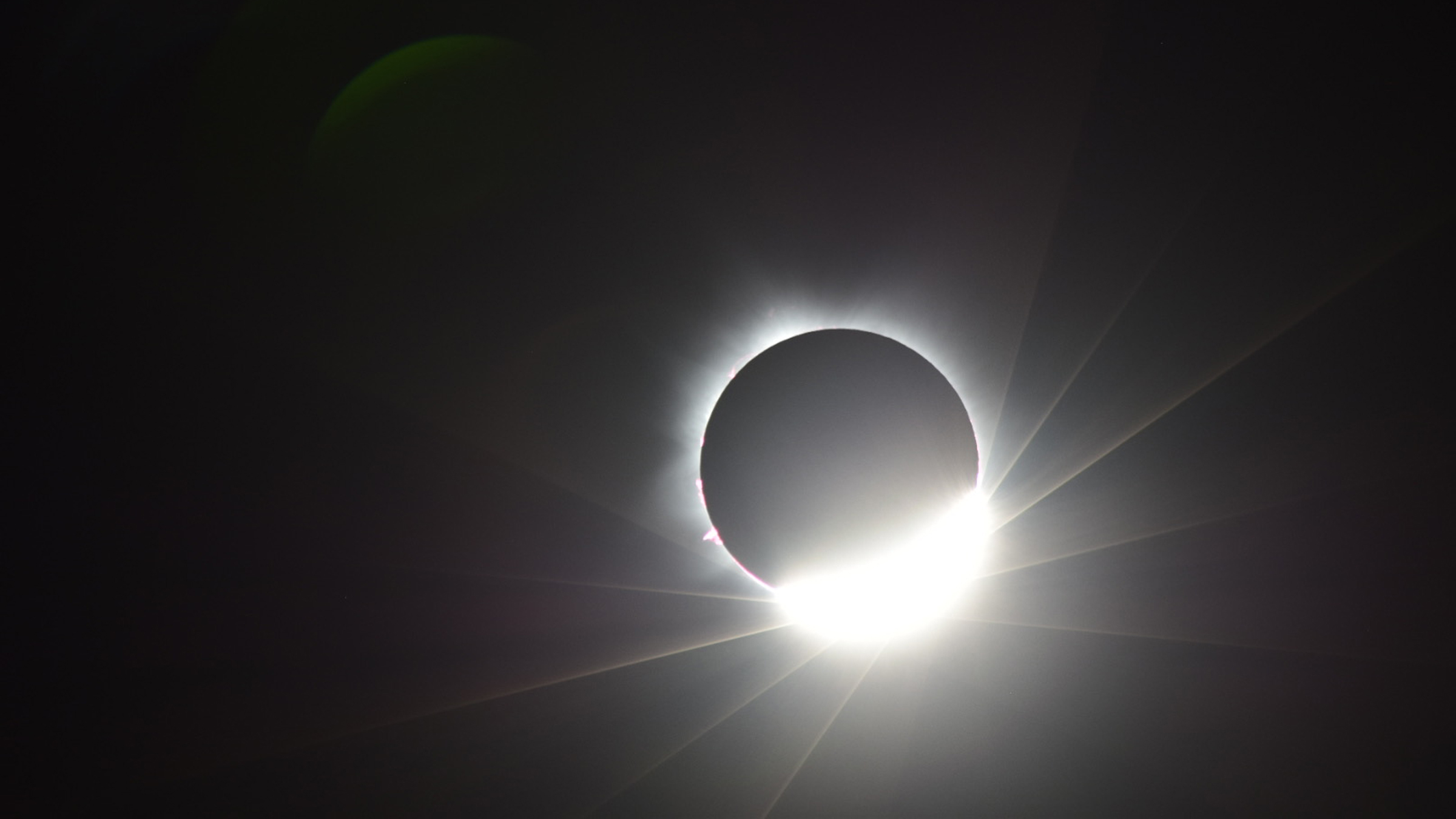
From the deck of a cruise ship off the coast of Australia, I witnessed a rare "hybrid-total" solar eclipse — the first of its kind in a decade.
The celestial show was dazzling, with a colossal corona — or the sun's glowing outer atmosphere — temporarily visible from behind the moon passing in front of it; multiple prominences, or towering loops of plasma extending from the sun; and a dramatic, drifting "diamond ring" that could be seen from Australia on Thursday morning (April 20), with a totality that was gone in 60 seconds.
That morning, myself and 2,000 fellow eclipse-chasers — the vast majority of whom were Australians about to witness their first solar eclipse — woke up under completely clear skies and in the still waters of the Exmouth Gulf, Western Australia, aboard the Pacific Explorer, operated by P&O Cruises Australia.
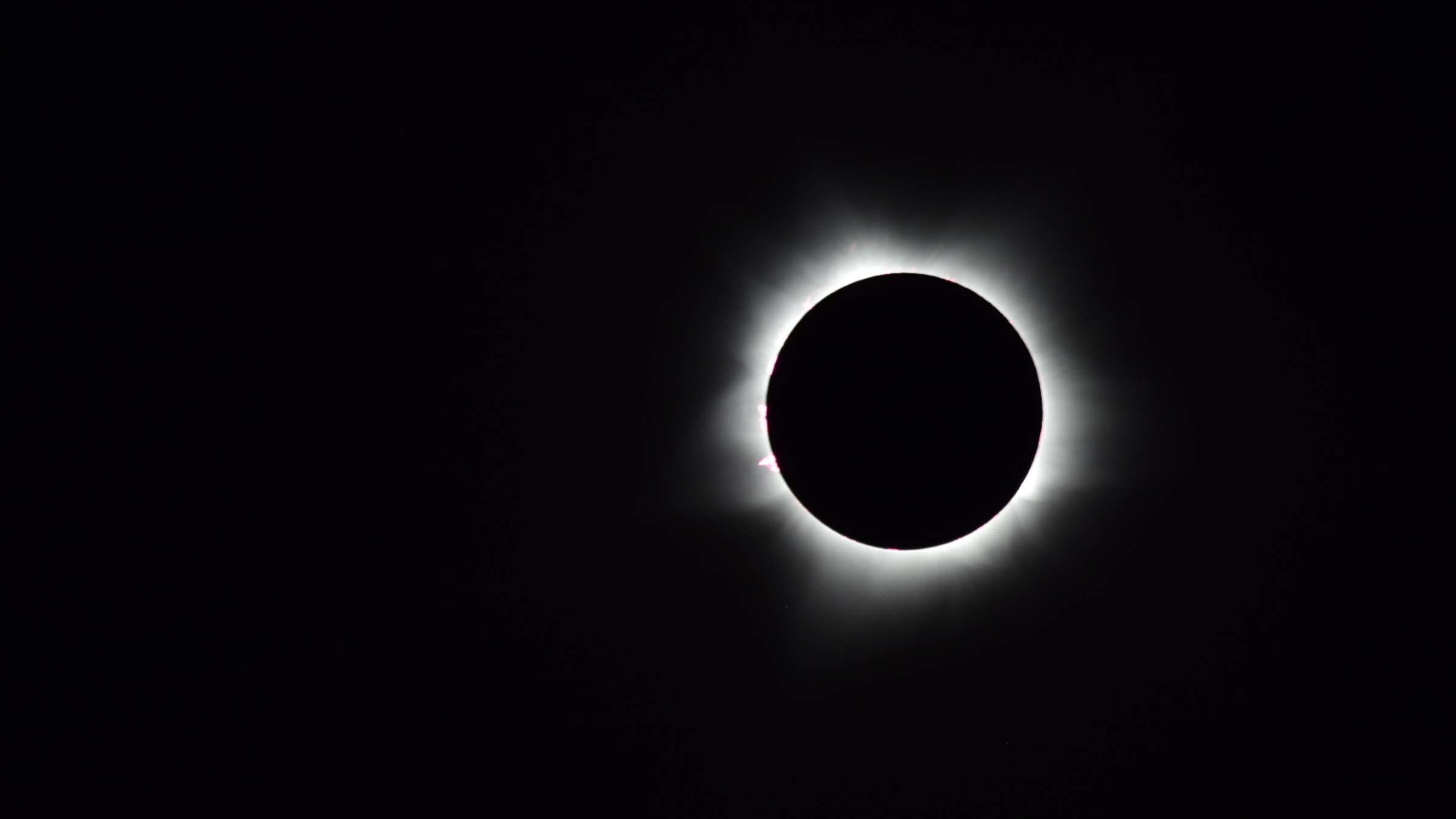
As far as solar eclipses go, a hybrid solar eclipse is a momentous one to see. Hybrid solar eclipses are a combination of a total solar eclipse, when the moon completely blocks the sun's light from reaching Earth, causing temporary darkness known as totality, and an annular solar eclipse, when an outer ring of the sun's light is still visible around the moon.
However, it's impossible to see both from the same spot; the "hybrid" nature of this event is a description of the entire path of the eclipse. In the narrow path of totality, where I was waiting on the cruise ship, eclipse-chasers could look forward to the prospect of an extended display of Baily's beads — bright pinpricks of light that peek out around the edge of the moon just before and after totality.
After a four-day journey of 850 nautical miles (1,575 kilometers) from Fremantle near Perth through largely clear skies, expectations were high. What unfolded was a totality more spectacular than anyone had predicted.
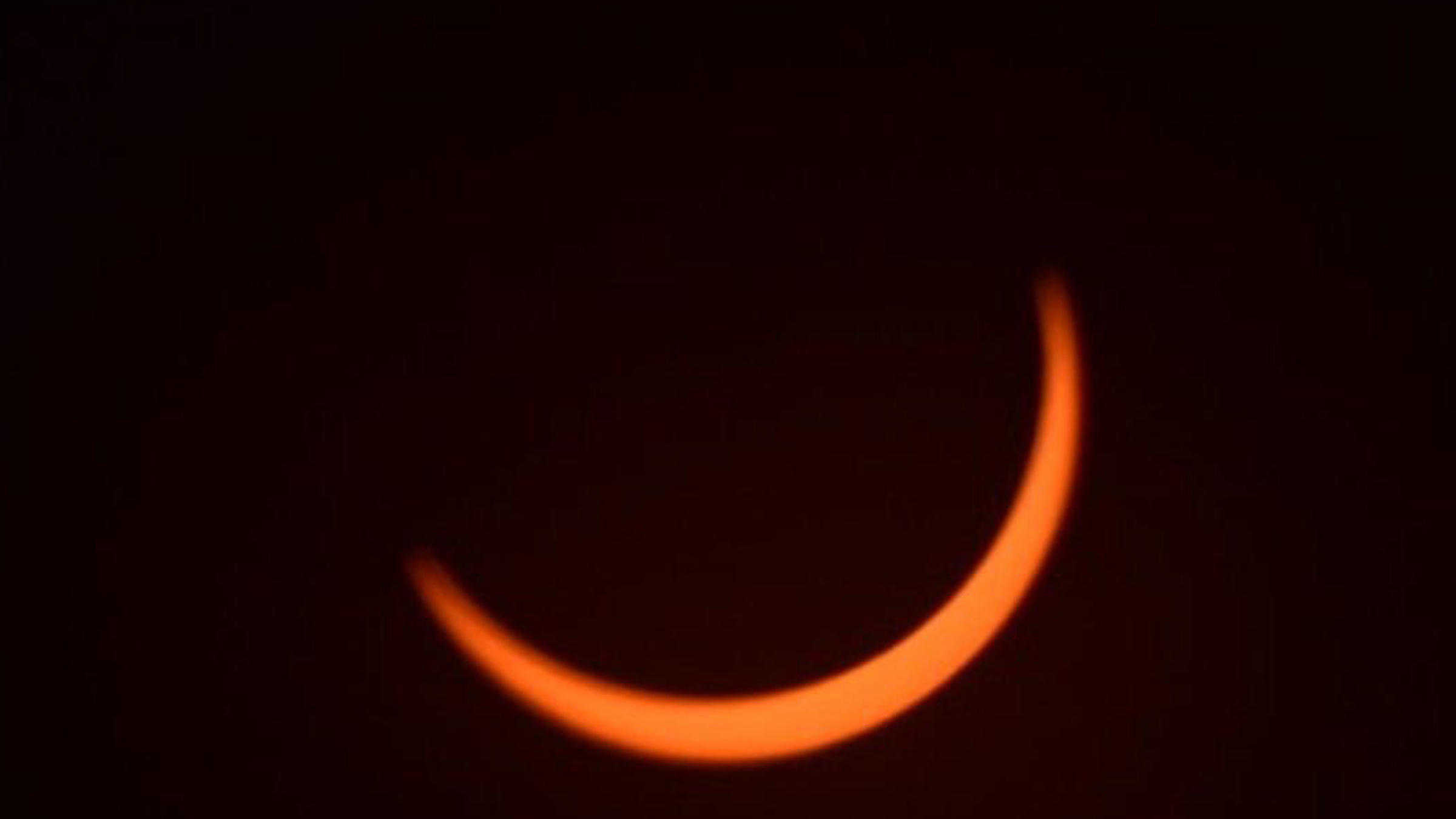
"First contact" of the new moon with the sun occurred at 10:04 a.m. AWST (10:04 p.m. EDT), when the new moon appeared to take a bite from the top of the sun, creating a "smiley face" crescent.
At 11:31 a.m. AWST (11:31 p.m. EDT) — the calculated moment of totality — neared, the temperature noticeably dropped and the light took on a sharp, silvery quality only noticeable during a deep, partial solar eclipse.
Some people reclined on sunbeds to watch the spectacle, wearing specialized eclipse glasses to protect their eyes from the sun; others readied telescopes and cameras. As the moonshadow approached at around 14,000 mph (22,500 km/h), the last spots of sunlight streamed through dozens of lunar valleys.
"Baily's beads!" came the shout, followed by a "don't look yet!" The near-perfect match between moon and sun caused a glorious glitter around the lunar limb as the solar corona was soon revealed. It was a huge spread of wispy, white spikes, larger than any seen during an eclipse for a decade or more; the lightshow was likely related to the sun's nearing a period of peak activity, known as the solar maximum, which it's predicted to reach next year.
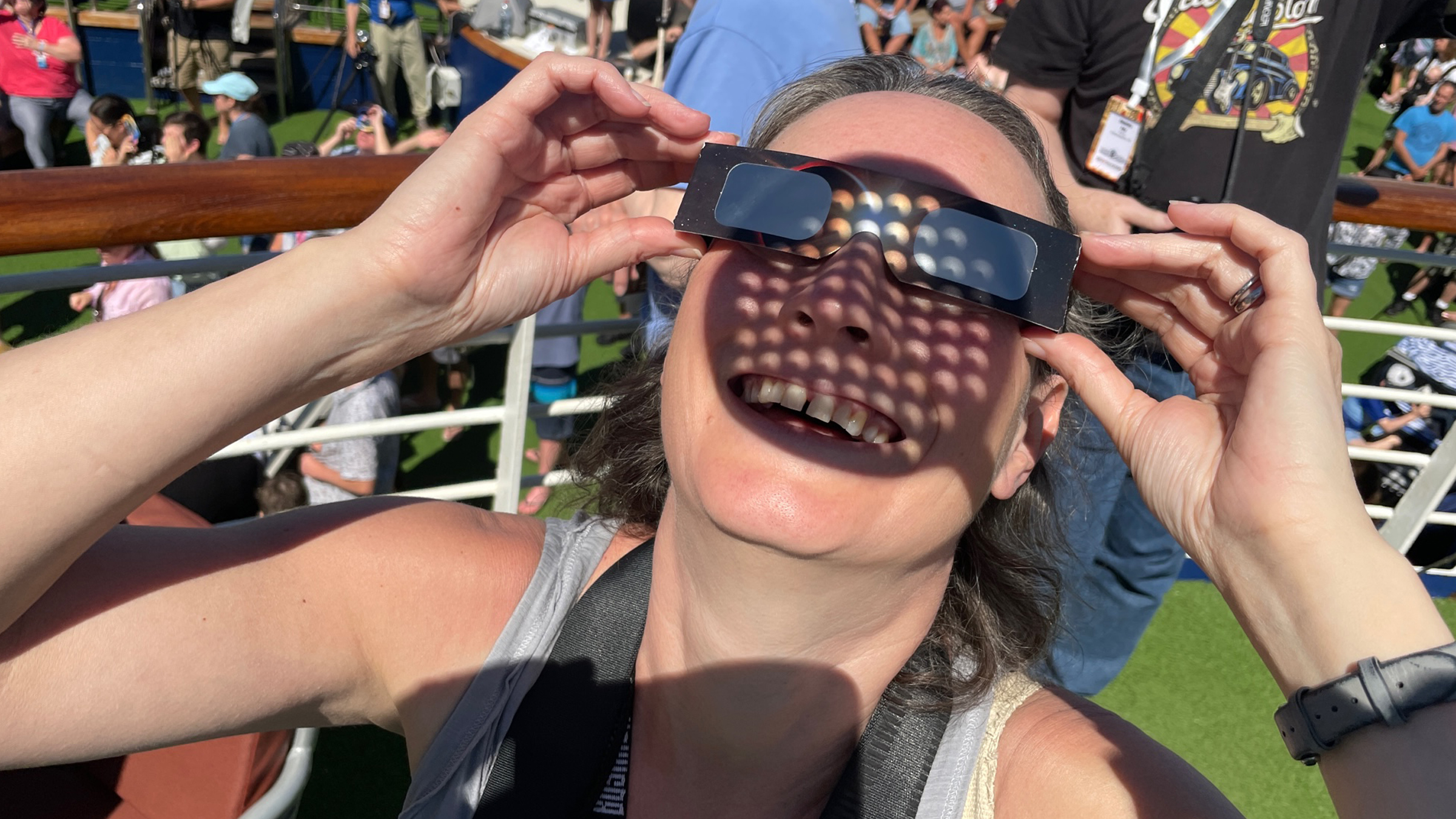

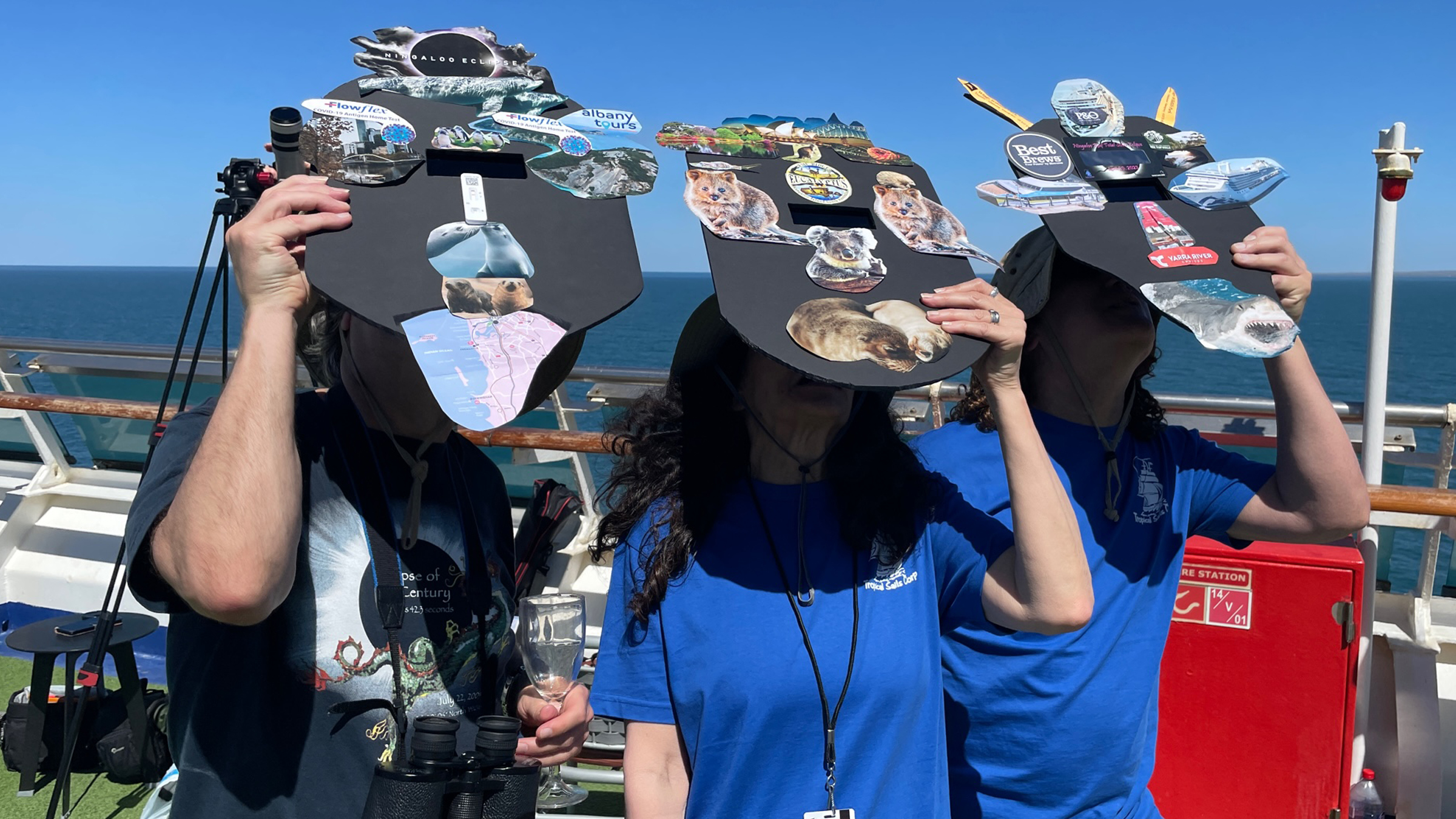

As a blue twilight swallowed up the Exmouth Gulf, several pink prominences — explosions on the surface of the sun — were also revealed. A yellowy glow became visible around the horizon, just outside the moon's shadow.
As quickly as it began, this short totality drew to an end. A glitter of beads appeared once again on the other side of the moon as it made its way across the sun, but what followed was extra special.
Instead of quickly coalescing into a single bead of light, the beads seemed to merge erratically, dance indecisively and drift deliciously along the limb before forming a "diamond ring" that seemed to last as long as 5 seconds.
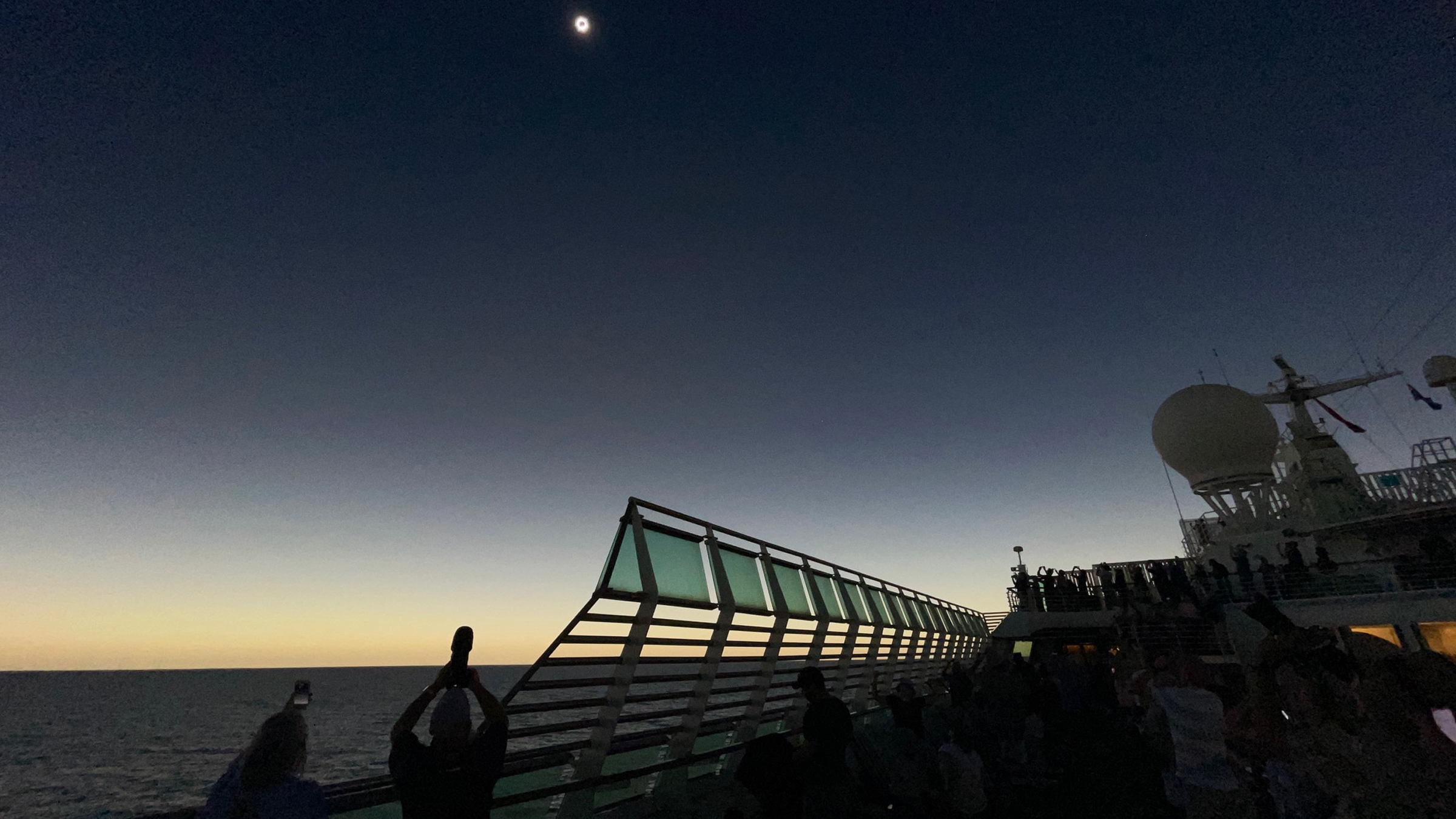
Totality was over — gone in just 60 seconds — and my fellow passengers erupted into an excited babble to swap impressions of the experience.
"There haven't been prominences like that since 1991!" said Michael Zeiler from GreatAmericanEclipse.com at his 11th total solar eclipse. That display of solar explosions is one of the advantages of experiencing a total solar eclipse while the sun is so active.
Next year, when the sun reaches solar maximum, a total solar eclipse will be visible in Mexico, the U.S. and Canada on April 8, 2024 — and that will be one not to miss. That upcoming totality will last more than 4 minutes.
The Pacific Explorer passengers who witnessed Thursday's eclipse have another one to look forward to — in about eight years time. The next hybrid total solar eclipse will be on Nov. 14, 2031 and will be visible from the Pacific Ocean.







